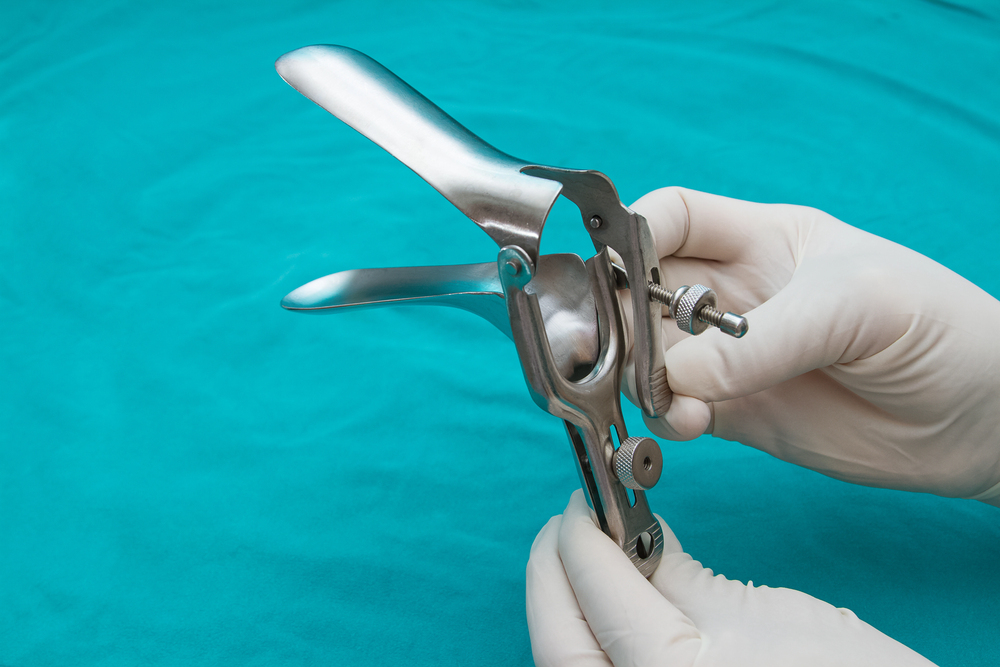Annual Gynecologic Exam: Best Ways To Protect A Woman’s Health
Published on 07/03/20
Although the annual gynecologic exam recommendations continue to change over the years. 3 to 5 years for a pap smear is the new normal but it is to a woman’s utmost benefit to continue to see your Gynecologist annually to protect her health the best she can.
An annual gynecologic exam can be performed by many types of doctors with specialized training in gynecology. Yearly visits aren’t just for pap smear anymore. With gynecology physicians specializing as nurse practitioners, certified nurse midwife, primary care physician. Or physician assistant; pap smears are among the many ways for women to take preventative care to the next level. Not only screening and education but also a practice that is specific to women.
Considering women’s needs are ever changing throughout the years, from adolescence through to their older age. An annual gynecological exam can help your provider understand a women’s changing health care needs and any issues they may need to address along the way:
- sexually transmitted infection (STI) screening and prevention
- preconception counseling
- menstrual problems
- pelvic pain
- sexual function
- birth control
- fertility
- vaginal infections
- menopausal symptoms
- breast changes
There are many conditions and symptoms that come with health care that can alert a woman to make an appointment for their annual gynecological exam. However, there are also additional conditions that can affect a woman’s health without any symptoms or warning signs. These include conditions such as cervical cancer, the human papillomavirus or HPV, and breast cancer.
With regular screening at your annual gynecological exams, these conditions can be detected in their early stages and treated effectively. In addition to personal education from your provider on ways to stay healthy. Healthy diet, exercise, mental health and vaccinations can be guided by your Gynecologist.
When Is It Important to Consider Making An Appointment?
The American College of Obstetricians and Gynecologists (ACOG) recommends that a first visit to a GYN provider take place between the ages of 13 and 15. This visit will probably not involve a pelvic exam, but rather will focus on education. Topics will include:
The American College of Obstetricians and Gynecologists recommends a women’s first exam start around the age 21, even before becoming sexually active.
As for the first visit, the American College of Obstetricians and Gynecologists recommend that the first visit should be around the ages 13 to 15. This would not be a pelvic exam, this would be geared towards educating young teenage girls on the importance of: positive habits like balanced nutrition, healthy weight ranges, sexuality/relationship issues, preventing STIs, vaccinations for conditions like HPV, recommendations, and avoiding bad habits such as smoking. Giving teenage girls early input on taking the first steps to good health for the future.
The frequency of your gynecological visits can vary based on age and needs for that age range in a woman. Beginning in adolescence women should receive at least one exam annually. Which should continue throughout their lifespan to make sure the opportunity to access all the recommended preventive health services. Which, typically, insurance companies cover your first annual gynecologic exam visit. This makes preventive measures with your provider an affordable habit.
Additionally, here’s a recommended schedule for pap tests by the American College of Obstetrics and Gynecology:
- Under 21 – No Pelvic Exam – Just Education
- Ages 21-29: A Pap Test is recommended every three years as long as the test results are consistently negative for abnormalities
- Ages 30-65: A Pap Test with HPV testing every three years as long as the test results are consistently negative for abnormalities
- Over Age 65: no Pap Test is recommended
If your tests come back abnormal: whether a pap test, HPV, any medical conditions or a history of cervical cancer, there may be different recommendations from your doctor and your exam frequency.
When it comes to discontinuing exams, there isn’t a specific age set for women. It is suggested that pap smears may be stopped in women who are considered low risk. Women ages 66 and older are considered low risk and can decide to discuss the decision to stop having gynecological exams with their provider.
Aside from low risk women… women also to consider stopping their gynecological exams may include women who may have had their uterus and ovaries removed. Or may need to continue gynecological exams if they have a history of GYN conditions that may require continued monitoring.
How Should You Prepare for Your Exam?
It would be ideal to try and schedule your annual gynecologic exam when you are not on your period. It is also recommended to avoid certain vaginal activities 48 hours before your test:
- Vaginal Creams or Medications
- Intercourse
- Douching
It is helpful to bring a list of previous gynecologists who cared for you, medications and allergies, and a history of medical issues and of surgeries and hospitalizations. If you’re considering an appointment for a gynecological exam because of abnormal bleeding or pelvic pain, creating a log of the symptoms, what they are and when they occur could be helpful to your provider.
The Benefits of an Annual Gynecological Exam
To be preventive in your medicine is the best approach to your health. Your gynecologist or health providers are trained to detect potential conditions. Eliminating risk factors in your health can leave room for early detection and remedies. During an annual gynecological exam your health provider will be looking for:
- Breast cancer
- Bone disease/osteoporosis
- Bladder disease
- Sexually transmitted diseases
In the pelvic exam the practitioner will assessing potential concerns with your:
- Cervix
- Ovaries
- Bladder
- Uterus
- Fallopian Tubes
It is also important to help maintain the proper form of birth control, if you are prescribed the contraception. It is often that women need to change their birth control or even alter dosages. If birth control isn’t maintained properly, it can risk unwanted pregnancies.
For physical exams, it will be a urine sample, a pap smear, breast exam and an internal and external pelvic exam.
Pelvic Exams
The pelvic exam usually starts with you in a dressing gown. The Gynecologist will have you lying down with your legs in stirrups or your knees resting with a sheet draped over your legs. Your provider will give you your next directions and at this point, try to relax the muscles by breathing deeply. This way the exam is easy and efficient.
The pelvic exam is normally four main steps: the pap smear test, the external genital exam, the bimanual exam, and the speculum exam. You are able to request the company of anyone of preference; a friend, chaperone, family member, etc. They will be asked to stand in a specific location to preserve privacy.
To start, your practitioner will visually examine the vulva and labia. Looking for abnormalities: irritation, cysts, swelling, redness or any visual indication of a condition or of sexually transmitted diseases. Once the external examination is complete. Your clinician will continue on to check with a speculum exam.
A speculum is a sterile medical device that will be inserted into the vagina. It is not painful but may be cold to the touch and add a little pressure. Once in place, the speculum opens a little to separate the walls of the vagina so your provider can examine the cervix. Staying relaxed helps ease the pressure and make the separation of the walls easier. You are encouraged to communicate with your healthcare provider about your levels of comfort.
When examining your cervix, the clinician is looking for signs of indications of sexually transmitted diseases, unusual discharge, or signs of irritation. After looking for visual signs on the cervix, your healthcare provider will continue with a Pap Smear test.
Pap Smear
Used for detecting precancerous and cancerous cells. A Pap Smear usually consists of a quick pinch of a sample of cervical cells. These cells are tested for abnormalities and ensure the patient that the cervix is healthy. These cells are tested at a laboratory where the results are developed within a few weeks. These tests are recommended annually and considered very significant to the health of the patient. Abnormal cells are not always linked to symptoms and symptoms are not always present when testing is needed.
Once the Pap Smear is complete the speculum is removed. Your healthcare provider will then perform a bimanual exam. This is to check the health of the ovaries and the uterus. With the opposite hand, they will put pressure on your stomach. It may cause light discomfort for some, but can be adjusted with the right communication with your gynecologist.
Breast Exam
Breast exams can be done at home but are best with your healthcare provider. This test requires your doctor to manually palpate your breast. This will help feel for lumps, discharge, or thickening of the breast. As well as educate you to better examine yourself in the future.
Urine Sample
In addition, you may be asked to provide a urine sample that can test for kidney health, infections, and/or pregnancy.
These symptoms develop from many possible gynecologic issues, some of which need early treatment to prevent complications. For example, two causes of pelvic pain — uterine fibroids and endometriosis — can result in scarring and infertility.
Call Rosh Maternal & Fetal Medicine for your Annual Gynecologic Exam
Annual gynecologic exam services at Rosh Maternal & Fetal Medicine include providing comprehensive diagnosis and therapy for many conditions in-house. As a result, you can get quick answers and timely treatment when you visit your local Manhattan OBGYN.
Talk to our team by phone or book an appointment online to get started. Call one of our six convenient NYC locations or schedule a video consultation online today. They’ve helped thousands of women. Come visit your NYC OBGYN.




